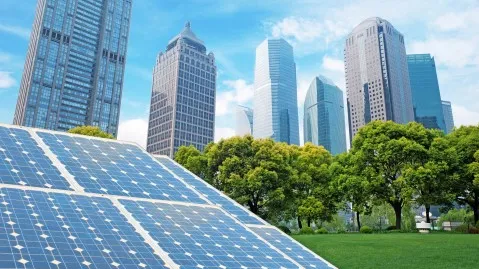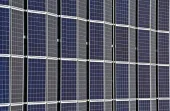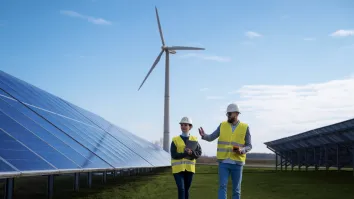
Here comes the sun: Asian countries turn to solar for long-term energy mix (1/3)
Why are Chinese firms rushing to go solar asap?
As the slow shift to renewable energy gains traction worldwide, Asian countries have taken the opportunity to invest in solar energy with a view to including it in their long-term energy mix. This sector report examines three Asian countries' ventures in going solar-- China, India and Thailand move to increase the role of solar power into their countries’ energy mix. China’s operators are in a hurry to create new solar power plants, but the government is lagging in delivering the incentives it promised.
China: A fragmented gold rush
In what appears to be a continued momentum in the installation of solar energy projects in the country, China's energy companies are in a rush to maximise benefits provided under the current system.
In May 2015, China’s State Council outlined in an official notification how its domestic manufacturing industry will pursue opportunities abroad through international cooperation. Frank Haugwitz of the Asia Europe Clean Energy (Solar) Advisory Co. Ltd. says drivers are an increasing assertiveness being able to compete outside of China and the demand for infrastructure projects, sustained industrialisation and urbanisation in both developing and emerging economies. Identified key industries consist of, among others, steel, railway, chemicals, automobile, aerospace, communication, shipping and electric power. The latter explicitly covers thermal, hydro, wind and solar photovoltaic (PV) system.
"The State Council’s notification stipulates further to actively participate in the investment, construction and operation of PV projects, as well to strive for establishing manufacturing capacities in relevant countries. In this context, national companies considered internationally competitive will take the lead first, in order to encourage small and medium size companies to follow at a later stage, with the aim to cover the entire industrial value chain. By 2020, a batch of global manufacturing bases in various countries will be established," Haugwitz says.
Potential entry points for setting up such “bases” are designated special economic trade and industrial zones in relevant host countries, offering favourable investment environments and strong local demand. To facilitate such global ambitions, China’s policy banks such as the China Development Bank, Import‐Export Bank, China’s Sovereign Fund, the China Investment Corporation, among others, are encouraged to offer active support. During the visit of the Indian Prime Minister,Nahrenda Modi to China in mid-May, multiple memoranda of agreement between Chinese and Indian solar companies were signed.
Haugwitz adds that China’s target of installing 17.8 gigawatts makes 2015 a truly ambitious year. If successful, by the end of 2015, China could be home to approximately 45 GW of total installed solar PV, which would represent roughly 3 percent of the total existing power generation capacities.
Sky is the limit for installations
Data from the National Energy Administration (NEA) show that the first quarter of 2015 has already witnessed impressive high level installations amounting to 5.04 GW of what seems to be roll-over projects from the last quarter of 2014.
Analyst Charles Yont of CLSA says, as of now, there is a gold rush as operators race to lock in high tariffs that are not likely to be around forever. Haugwitz says overall, NEA’s exceedingly ambitious target of 17.8 GW has so far been met with an equally bullish demand for projects. Solar development in China appears to be gaining momentum, thanks to the greater flexibility afforded to developers, access to finance and permits, says Joseph Fong of Jefferies.
"Distributed generation does not appear to be ready to drive solar growth but developers can more aggressively build utility projects as the government has not set a hard target for distribution generation this year," Fong says.
Yont says China's solar energy sector is a very fragmented space with no clear leaders, especially in distributed generation, which is at the centre of long-term disruption. He adds that aside from the ability to procure projects and capital, there are not many clear differentiating factors for Chinese solar operators.
"At the same time, the gold rush atmosphere has naturally led to a plethora of bad projects that are difficult to identify without going all the way down to theproject level for due diligence. Over the coming years, management teams that prove they are able to differentiate the good from the bad will earn a premium from the market," Yont says.
Challenges stil lurk
The biggest current challenge facing every solar operator in China is that subsidies are not being paid on time, or at all. Yont says that projects connected to the grid with full approval since the start of 2014 have not yet managed to get on the registry to receive subsidy payments.
"This means that solar operators are currently only receiving the equivalent of the coal-fired tariff from the grid company on a monthly basis, with just 30-40% of total revenue booked," Yont says.
Although there is little doubt as to whether these accounts receivable will eventually be paid, there is equally little certainty about when they will be paid.
The renewable energy fund which disperses these payments appears to be running low. If a previous delay in wind subsidy is anything to go by, the solar registry should start clearing up as the renewable energy fund is topped up. Until then, cash flow for operators will be a significant concern, Yont says.
"Like most markets, China’s solar demand is dependent upon subsidies today and will remain so for the next couple years. Ultimately, if the economics do work, then policy changes will only be road bumps (albeit potentially very big ones) rather than catastrophic. The economics work," he says.



















 Advertise
Advertise







